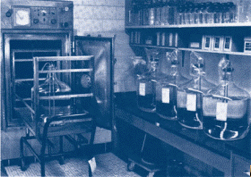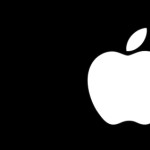Last week Dr. Carter shared a very interesting perspective regarding computerized physician order entry (CPOE). As I read Dr. Carter’s post I was reminded of a number of generational changes we have faced as the delivery of health care in this country has evolved. In thinking about a few of these an interesting perspective emerges. Consider the following changes that many of us have experienced, and a few that some of us have not.
DRGs
Around the time I graduated from college, a change was underway within the hospital world. In an effort to realign the financial incentives of hospital reimbursement, the state of New Jersey piloted a program based on paying the hospital for the job it performed for the Medicare beneficiary. Thinking of an appendectomy, for example, as a job that is performed for the beneficiary was a new concept, and switching from a cost-based payment methodology to one based upon diagnosis-related groups (DRGs) was certainly a sea change at the time. With the introduction of this prospective payment system, hospitals were influenced not only to modify the behavior of their employees, but also were charged with the more difficult task of modifying the behavior of their medical staffs.
RVUs
I finished my nephrology fellowship in 1991. The following year was my first full year in practice and I had the privilege to join a fantastic practice in urban Iowa. Unbeknownst to me, Medicare had made a significant change in the way physicians were reimbursed for providing care to Medicare beneficiaries. That year saw the introduction of the RVU (relative value unit). The RVU would quickly replace the practice of “usual and customary charges.” As a freshly minted nephrologist, I had no historical experience and as such have only known the RVU approach to payment. Senior members of my practice, along with many members of the local hospital medical staffs on the other hand were quick to lament the change that had been thrust upon them. Naively, I wondered what the big deal was.
EHRs
As we have seen with the introduction of the RVU and DRG systems, the widespread adoption of electronic health records is also creating a sea change. Health Affairs recently published an article which contained this table displaying the changes in EHR adoption rates by primary care docs in 10 countries. While the U.S. lags behind in EHR adoption rates, the trend is quite clear.
Physicians and other health care workers who have historically recorded information using pen and paper are now compelled to utilize a wide variety of electronic systems. Dr. Carter discussed one of the commonly performed tasks, order creation, which is in the midst of widely transitioning to an electronic process. CPOE is an existing Stage 1 meaningful use objective, but in stage 1 CPOE is restricted to medication orders and in the ambulatory world it is often accomplished via electronic prescribing. In Stage 2, the hurdle for CPOE is substantially higher.
CPOE
The Stage 2 version of this objective changes the denominator for CPOE to all orders created by the provider during the reporting period. (When reporting meaningful use the nephrologists will continue to exclude the hospital orders Dr. Carter discussed as they are created within the hospitals EHR.) Further, the Stage 2 CPOE objective will now include three fractions: med orders, lab orders and radiology orders, each with its own target. Beginning in 2014, physicians pursuing the Stage 2 objectives within their practices and those practicing in hospitals facing the Stage 2 objectives will increasingly face the sea change Dr. Carter discussed.
Several years ago while wearing a Quality Officer hat, I led a team at our local hospital tasked with improving patient safety. We dissected the existing paper-based physician order system and determined there were over 50 individual points of possible failure between the time the provider contemplated a med order and the patient received the medication. CPOE does not completely solve this problem—in fact some have argued it brings new challenges to the table—but it does represent a tremendous change that each of us will be compelled to adopt.
One final thought Brad’s post brings to mind. Our oldest child will graduate from medical school next spring. I was recently discussing a related topic when it became very clear he will never “write” an order. The generation of health care providers we are training today are growing up in a world of technology. Just like my experience with RVUs, this new generation of providers will not experience CPOE as a change, but an expected standard of practice.
Karl Nolph, my chief in fellowship, once described the glass bottles used in the early days of peritoneal dialysis. Today one only sees them in pictures.
Some day the hand-written order will also become part of history. As one of my colleagues reminded me last week, change is inevitable, growth is optional.
How are you facing this sea change? What has your experience been with CPOE? Leave a comment and join the conversation.





Leave a Reply